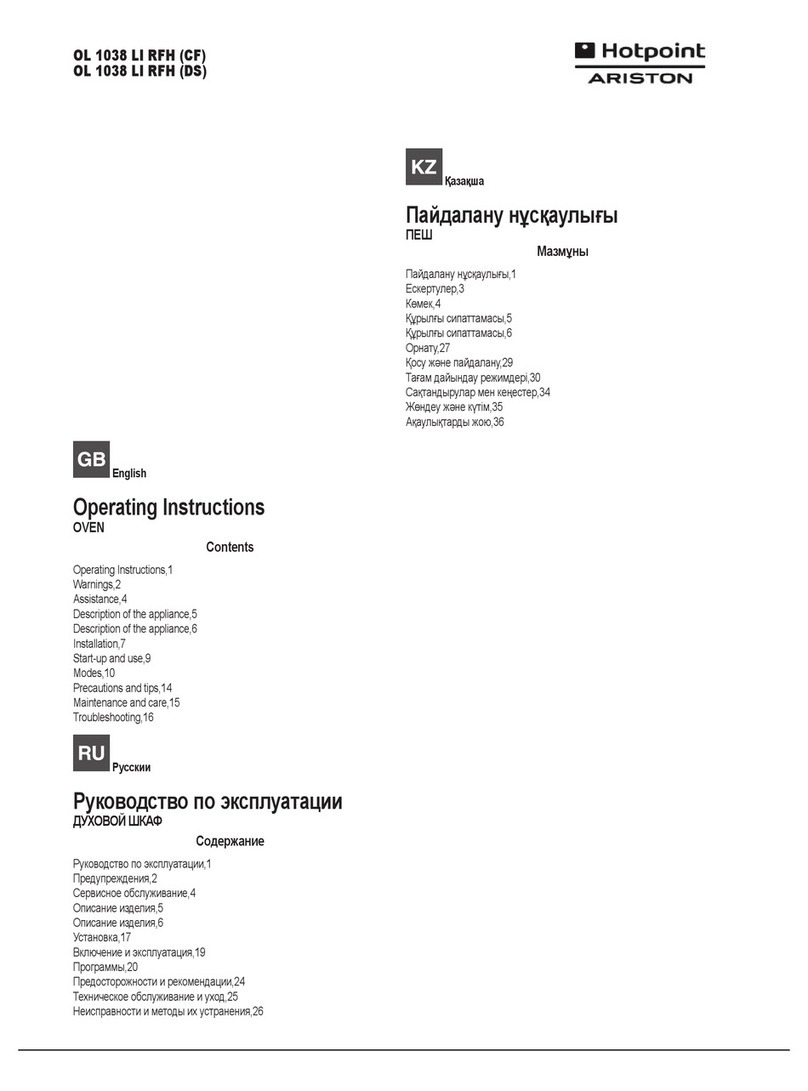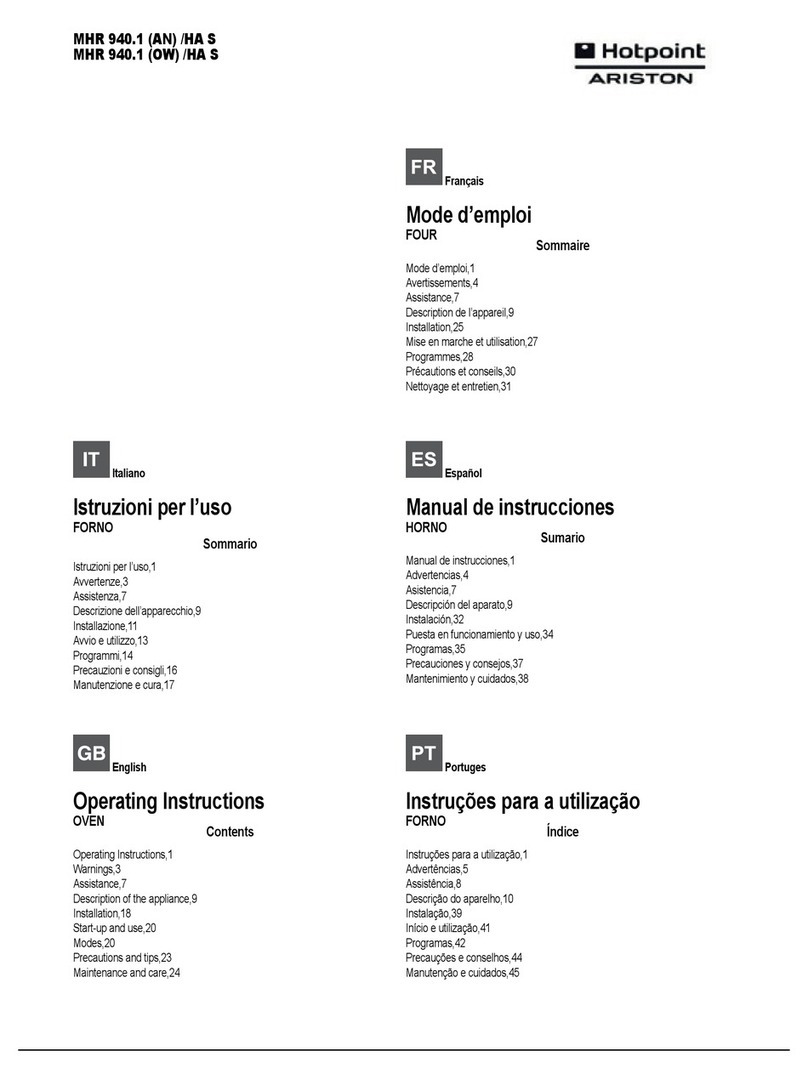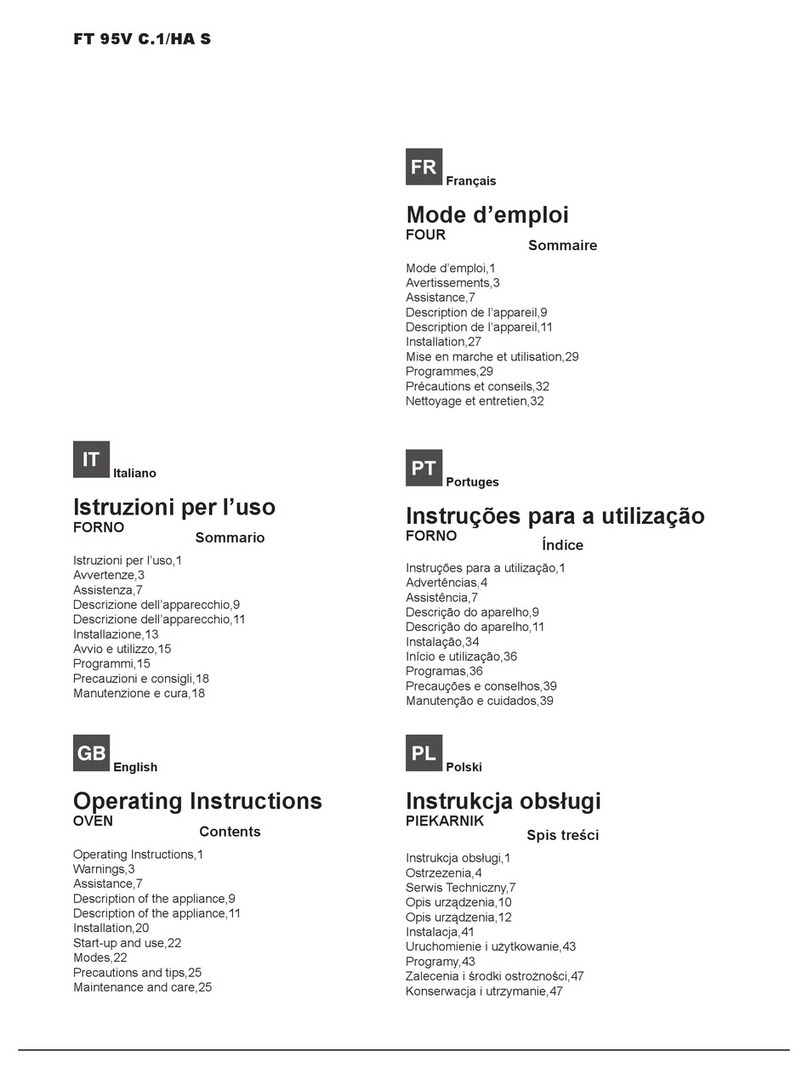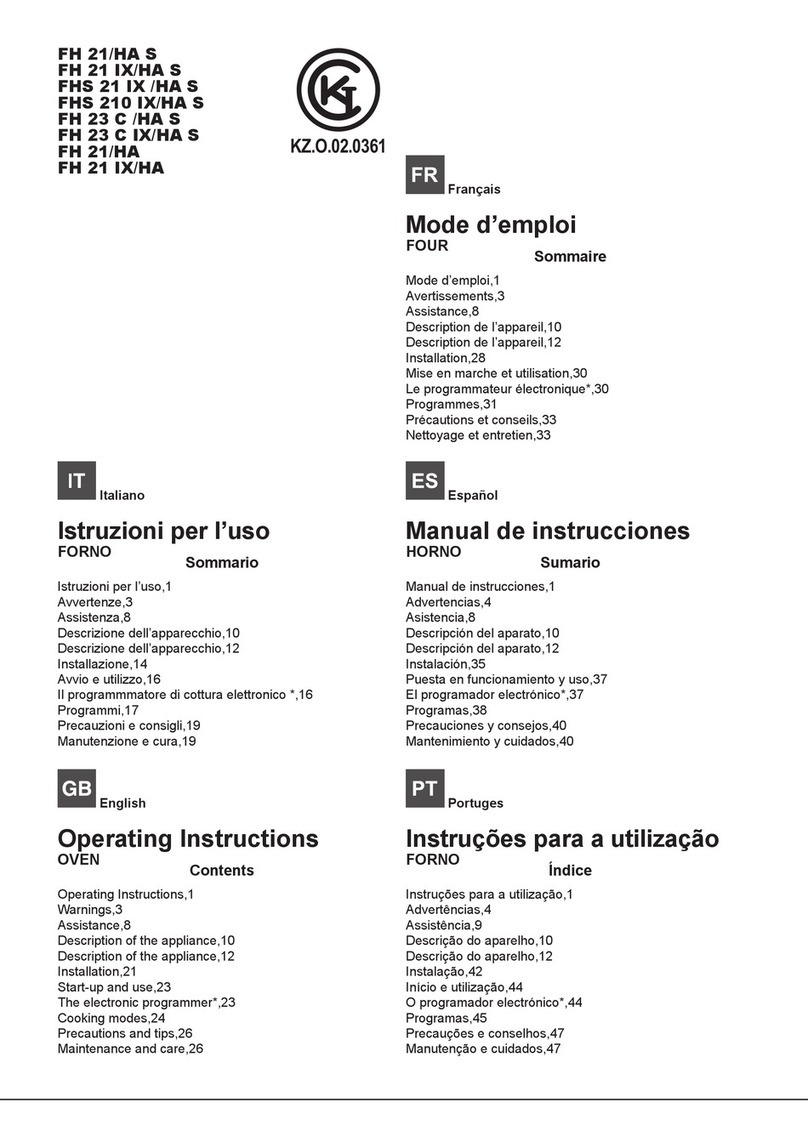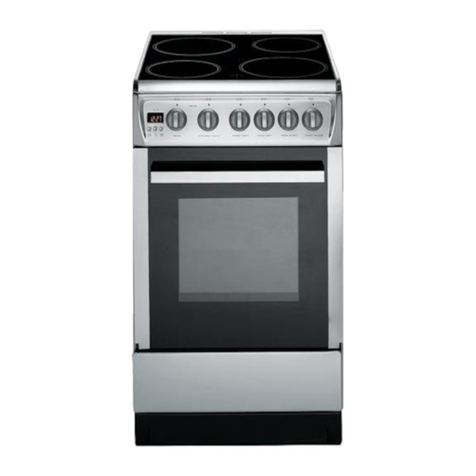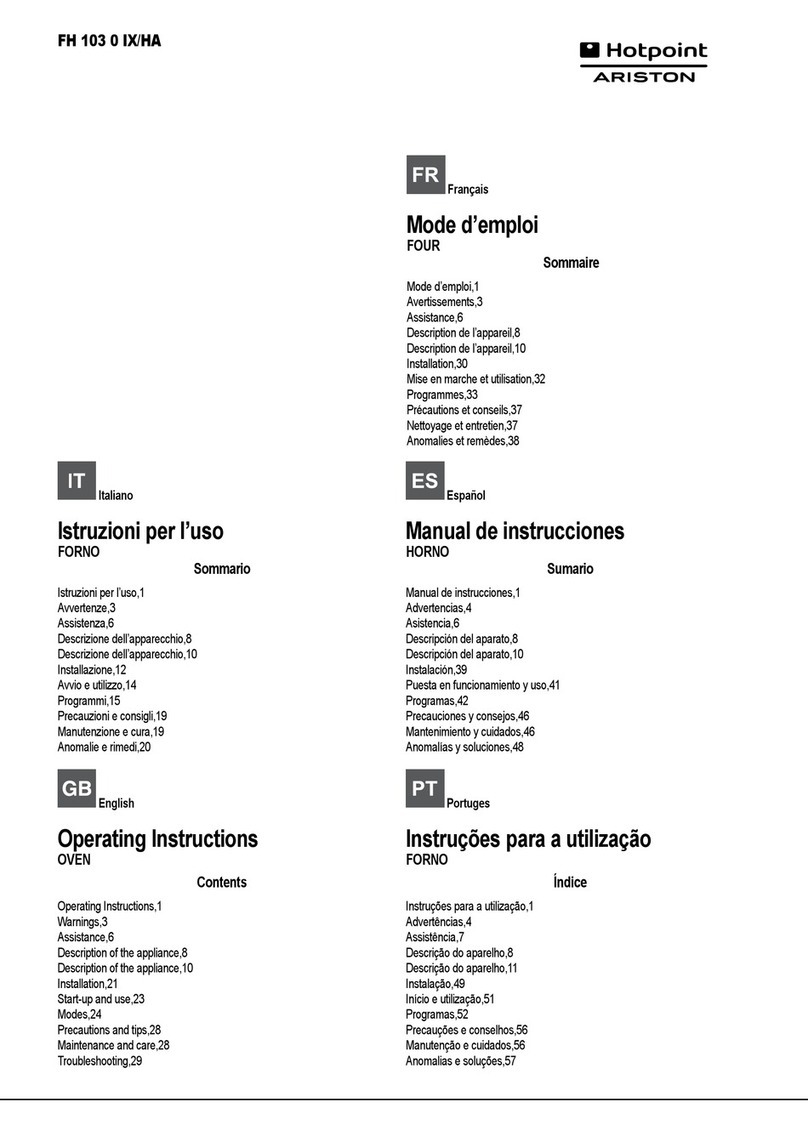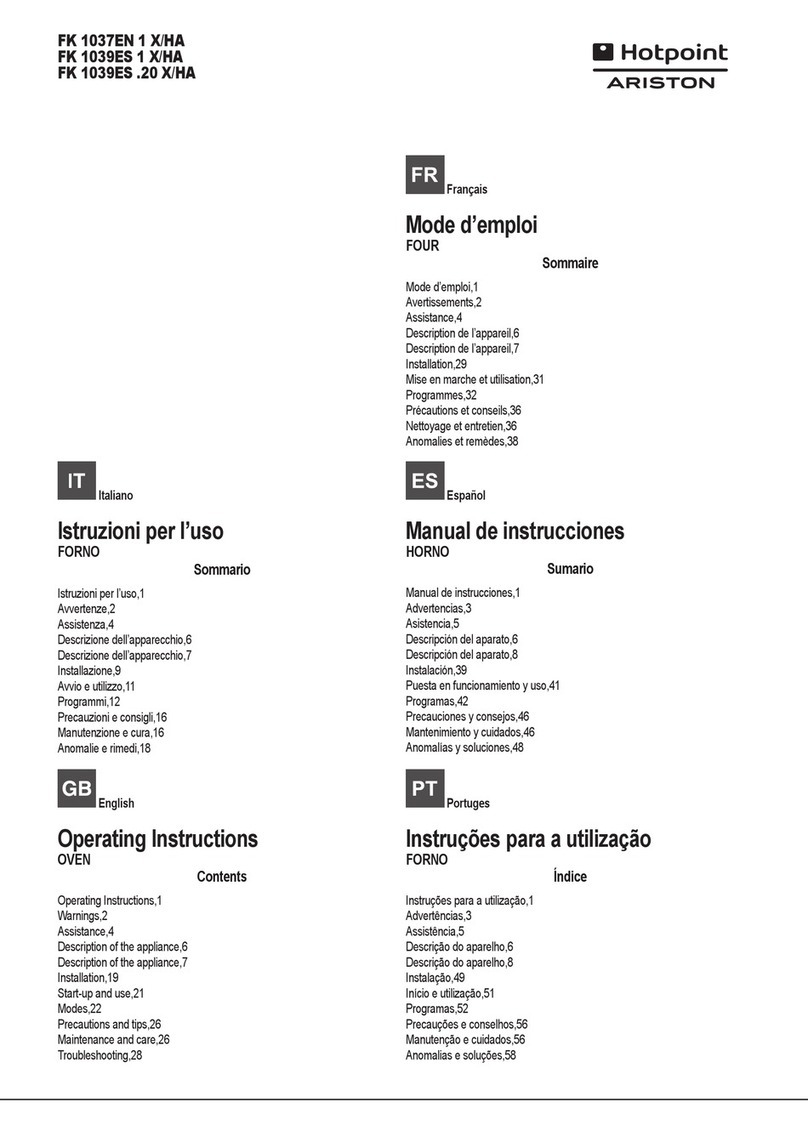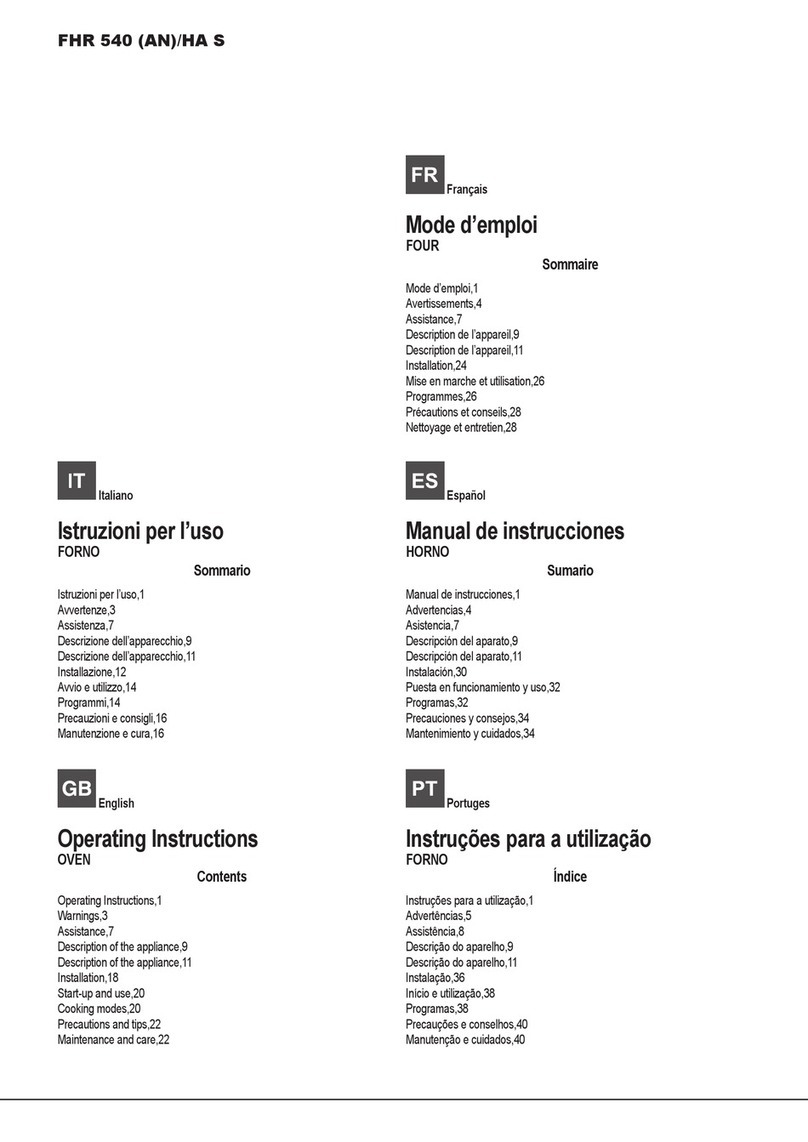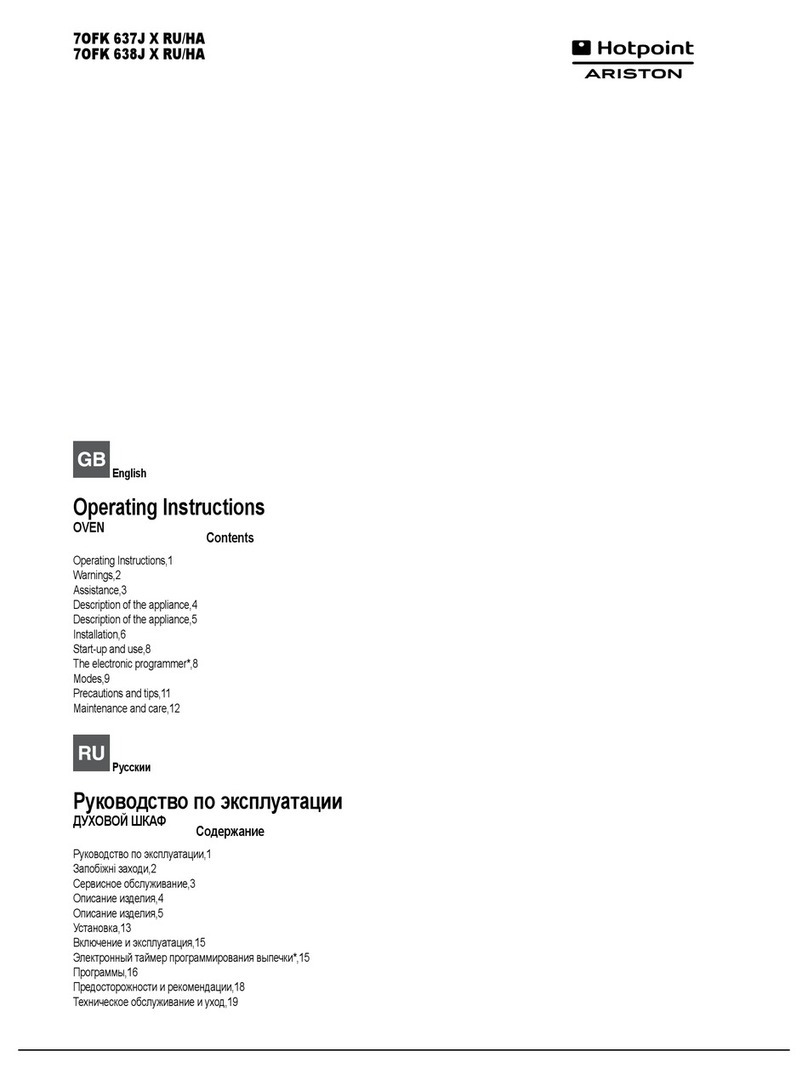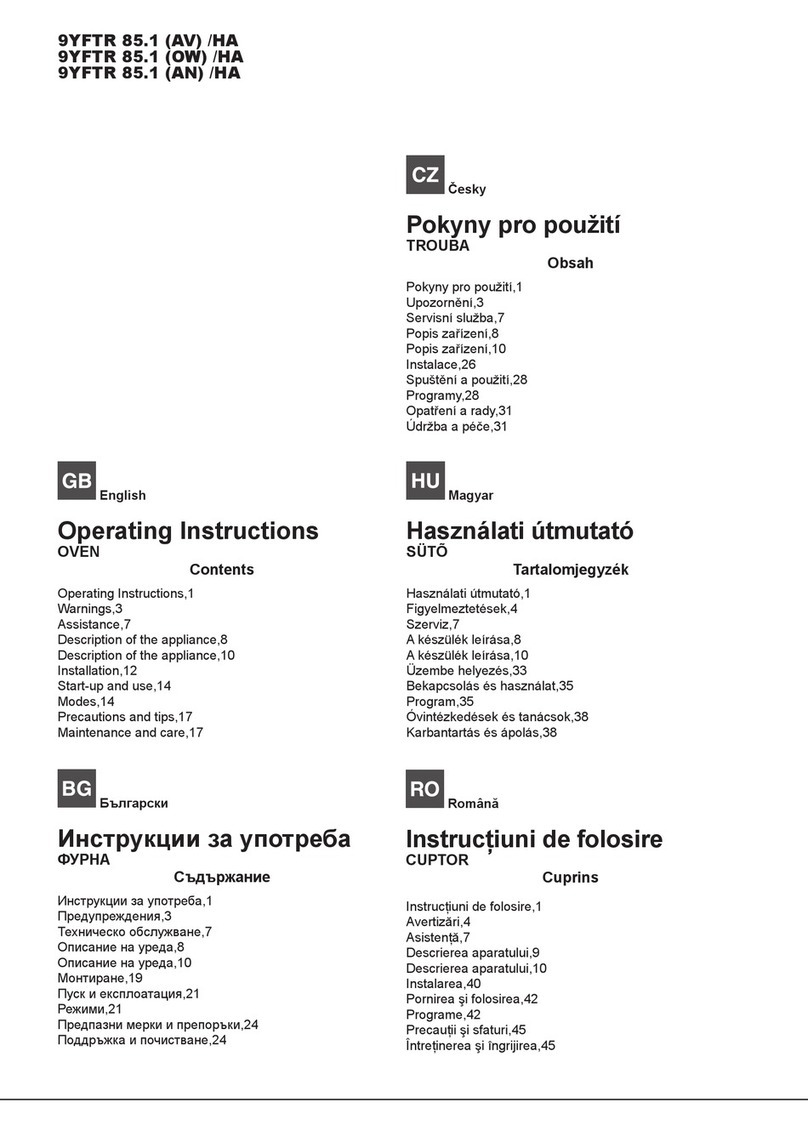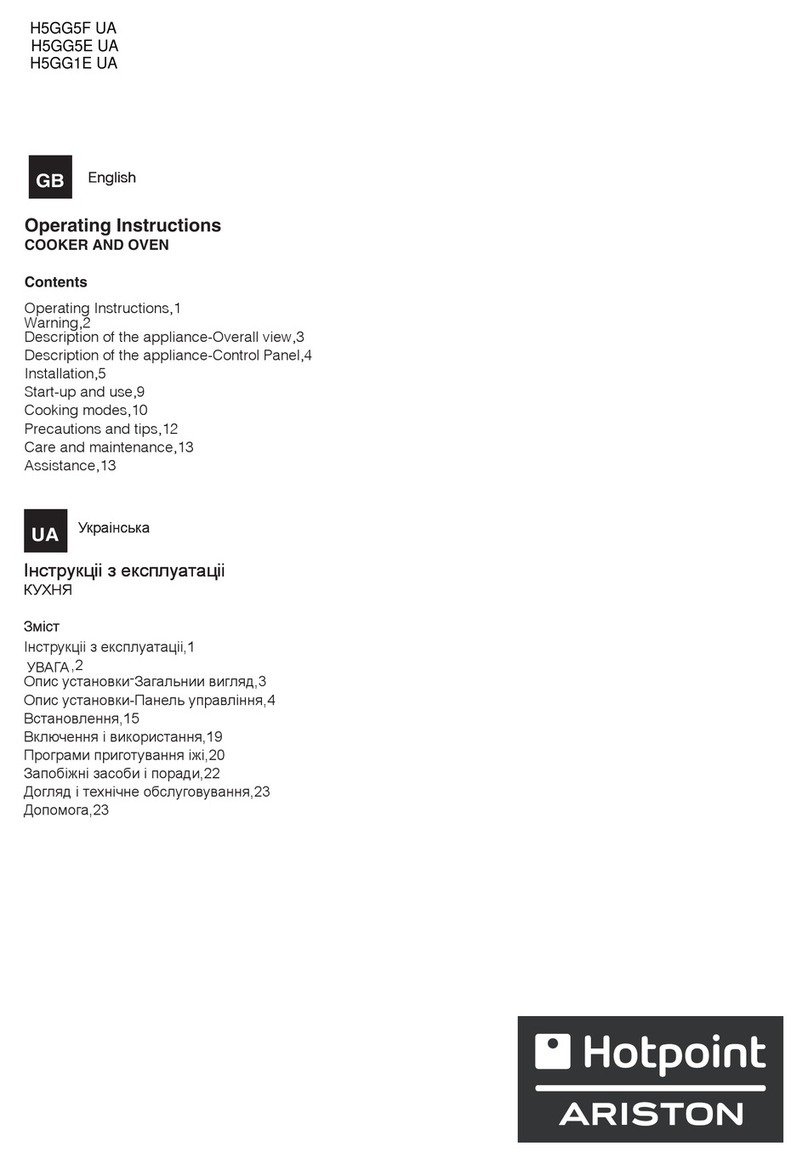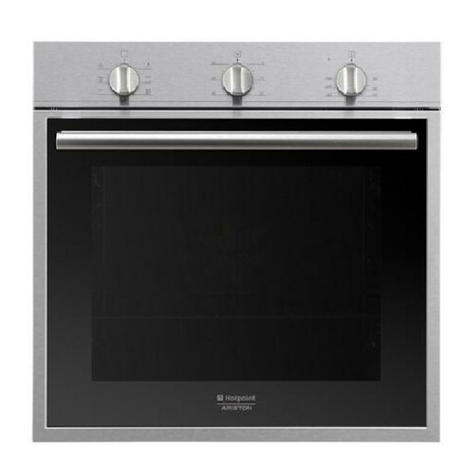10
GB
Precautions and tips
The appliance was designed and manufactured in
compliance with international safety standards. The
following warnings are provided for safety reasons
and must be read carefully.
General safety
The appliance was designed for domestic use
inside the home and is not intended for commercial
or industrial use.
The appliance must not be installed outdoors,
even in covered areas. It is extremely dangerous to
leave the appliance exposed to rain and storms.
When handling the appliance, always use the
handles provided on the sides of the oven.
Do not touch the appliance with bare feet or with wet
or moist hands and feet.
The appliance must be used to cook food by adults
only and according to the instructions in this manual.
Do not touch the heating elements and parts of the
oven door when the appliance is in use; these parts
become extremely hot. Keep children well away
from the appliance.
nsure that the power supply cable of other electrical
appliances does not come into contact with the hot
parts of the oven.
The openings used for ventilation and dispersion of
heat must never be covered.
Always grip the oven door handle in the centre: the
ends may be hot.
Always use oven gloves to place cookware in the
oven or when removing it.
Do not use aluminium foil to line the bottom of the
oven.
Do not place flammable materials in the oven: if the
appliance is switched on by mistake, it could catch fire.
Always make sure the knobs are in the l/¡
position when the appliance is not in use.
When unplugging the appliance always pull the plug
from the mains socket, do not pull on the cable.
Never carry out any cleaning or maintenance work
without having unplugged the plug from the mains.
In the case of a malfunction, under no circumstances
should you attempt to repair the appliance yourself.
Repairs carried out by inexperienced persons may
cause injury or further malfunctioning of the
appliance. Contact a Service Centre (see
Assistance).
Do not rest heavy objects on the open oven door.
The glass ceramic hob is resistant to mechanical
shocks, but it may crack (or even break) if hit with a
sharp object such as a tool. If this happens,
disconnect the appliance from the electricity mains
immediately and contact a Service Centre.
Remember that the temperature of the cooking zones
remains relatively high for at least thirty minutes after
they have been switched off.
Keep any object that could melt, away from the hob,
for example plastic and aluminium objects, or
products with a high sugar content. Keep plastic
or aluminium objects away from the hob: if you
forget them on surfaces that are still hot, they
may cause serious damage to the hob.
Disposal
Observe local environmental standards when
disposing packaging material for recycling
purposes. Observe existing legislation when
disposing of the old appliance.
The European Directive 2002/96/EC on Waste
Electrical and Electronic Equipment (WEEE),
requires that old household electrical appliances
must not be disposed of in the normal unsorted
municipal waste stream. Old appliances must be
collected separately in order to optimise the
recovery and recycling of the materials they contain
and reduce the impact on human health and the
environment. The crossed out wheeled bin symbol
on the product reminds you of your obligation, that
when you dispose of the appliance it must be
separately collected.
Consumers should contact their local authority or
retailer for information concerning the correct
disposal of their old appliance.
Respecting and conser ing the
enironment
By using the appliance in the hours between late
afternoon and early morning, you can help reduce
the work load placed on electrical companies.
Always keep the oven door closed when using the
G ILL mode to attain best results and to save
energy (approximately 10%).
egularly check the door seals and wipe clean to
ensure they are free of debris so that they stick
properly to the door and do not allow heat to
disperse.
